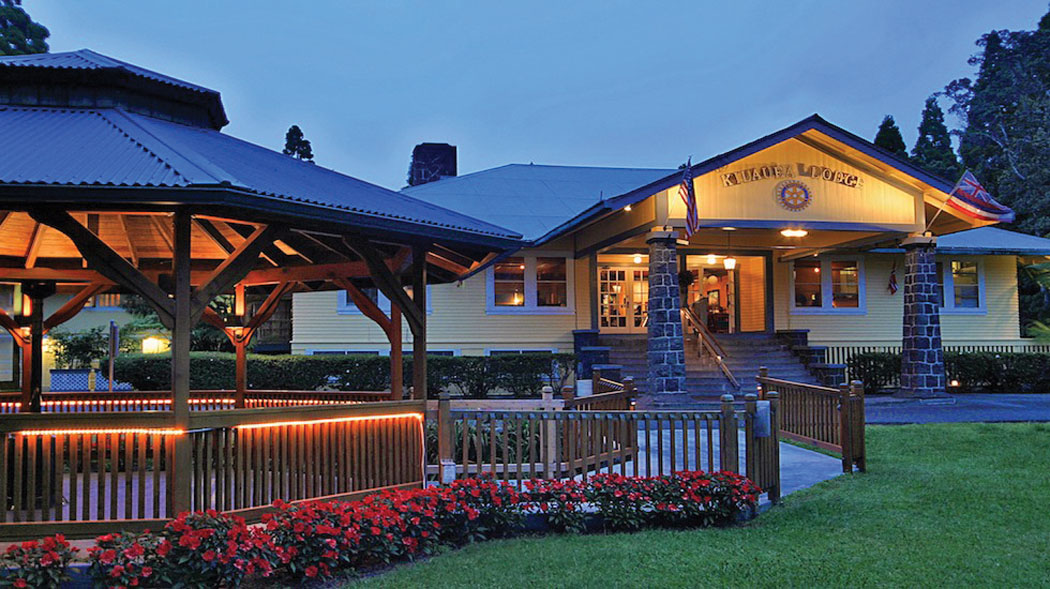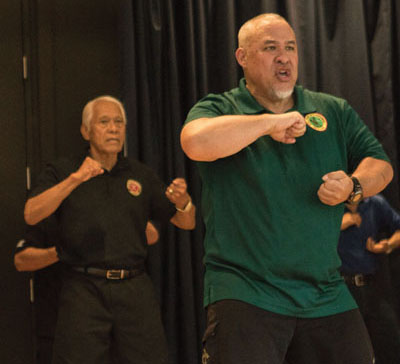
Honoka‘a High & Intermediate School Celebrates 130 Years
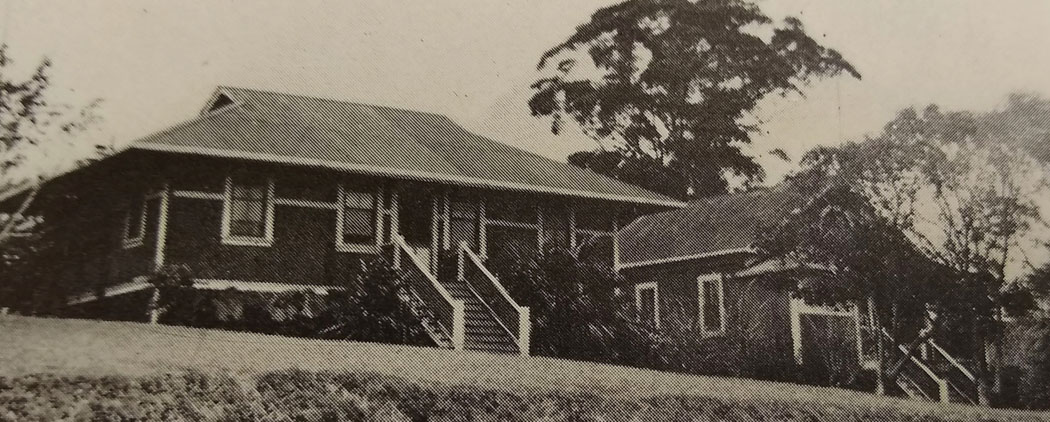
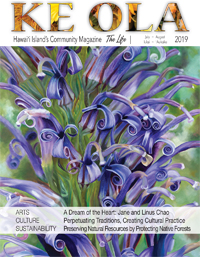
By Catherine Tarleton
Honoka‘a High & Intermediate School sits on seven ocean-view acres of Hāmākua hillside, its 19 buildings and covered sidewalks painted Dragon (their mascot) green and gold. 611 students, grades 7–12, work and play here. In its 130-year history, Honoka‘a High & Intermediate School (HHIS) has evolved with Honoka‘a town, from its bustling days as a thriving plantation town, through the changes of World War II, the tourism boom, decline of the sugar industry, and reinvention of itself for the 21st century.
This July, thousands of alumni from near and far will gather to celebrate the 130th anniversary of HHIS with a weekend full of activities, that—in traditional Hāmākua style—will include lots of music, food, talking stories, and more. A major parade through town hopes to feature representatives from each of the 80 graduating classes (1939 to 2019).
The first incarnation of Honoka‘a School was built on land purchased from Charles Montague Cooke (son of Castle and Cooke founder Amos Starr Cooke) in 1889. It was a small building on Ohelo Street near the Hāmākua Ditch, where Mrs. Robert M. Overend served as principal. When Mrs. Overend retired in 1892, a new principal came on board, and a three-room annex was added near where the Brantley Center now stands.
From the Report of the Minister of Public Instruction to the Legislature of the Republic of Hawai‘i: “The Honoka‘a school with its 288 pupils is the largest on the Island of Hawai‘i.”
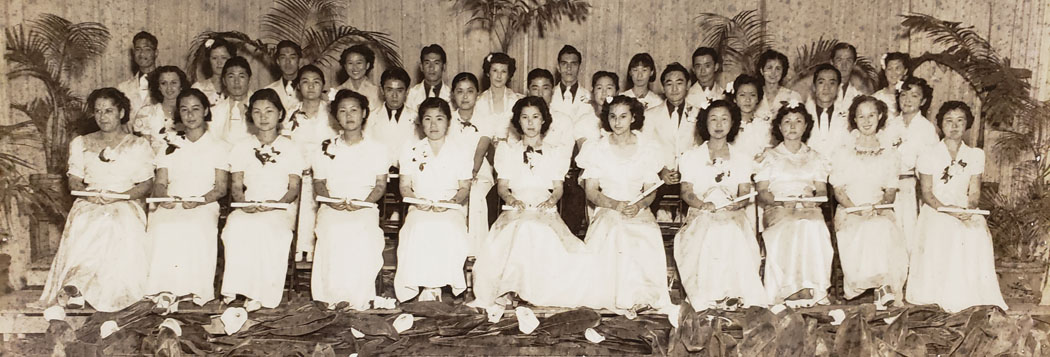
![The lineup for school lunch was “ladies first.” In spite of limited supplies during the war years, the menu listed “meat loaf, creamed salmon, chop seuy [sic], hekka, stew, Spanish macaroni and salads.” HHIS 1945 yearbook, NHERC Heritage Center](https://keolamagazine.com/wp-content/uploads/2019/06/HHIS-130-3.jpg)
As other schools had opened in the Hāmākua District, enrollment at Honoka‘a School declined to a low of 184 in 1908, when it moved into a four-room building on the site of the State Building (police station). Some alumni remembered riding horses to school, and beginning each day with the boys beating drums as they marched to classrooms. On November 11, 1918, when World War I ended, those drums were used to lead a celebratory parade through town.
By 1924, Honoka‘a was a junior high school, with classes up to eighth grade; three classrooms were added on the present campus, and enrollment reached 517. Throughout the 1920s and 30s, additional buildings, tennis courts, and a gymnasium enhanced the school.
Of note, HHIS’s new athletic field, completed in 1926, was proclaimed “one of the best in the Territory” by the Hilo Tribune-Herald. The field was located across the “government road” from the school’s location at the time. Other plans were in place to move the courthouse, jail, and jailer’s house, in order to build new school buildings, and to move existing buildings across the road.
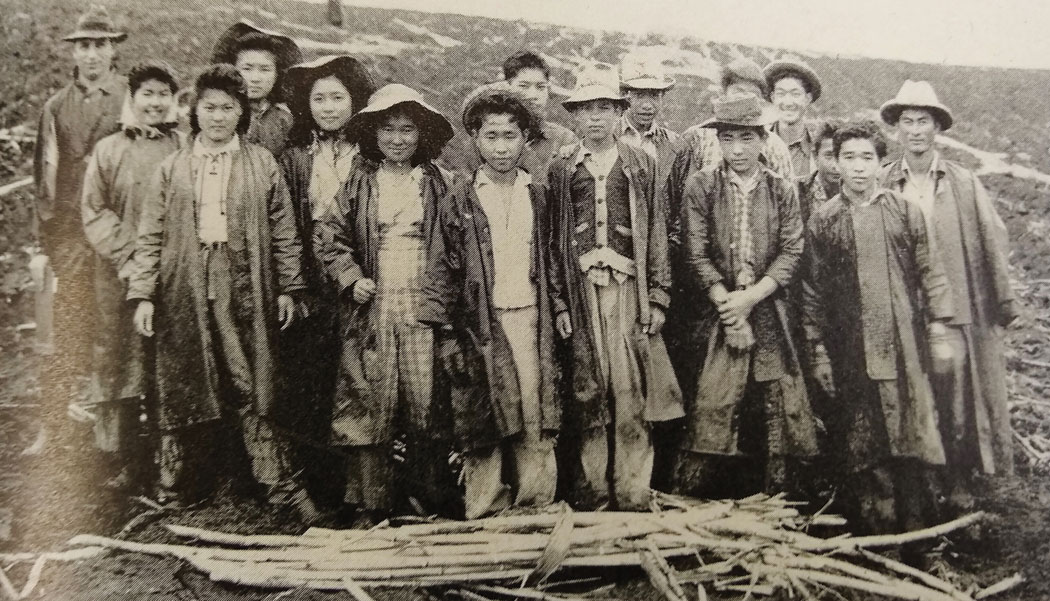
In 1936, a ninth grade class was added, followed by grades 10, 11, and 12 over the next three years. Mrs. Itsue Hino was in the first graduating class of 11th graders in 1938. She fondly recalled her days at the school during a baccalaureate ceremony for the HHS class of 2013:
“Stand tall, sit tall, and be proud please,” she said at the service, where she and classmates Florence Botelho and Fujie Matsunami were special honorees. “Talking to you now takes me back 75 years…So, there are two foreign words I would like to give you. Arrigatai—be grateful. And gaman—persevere.”
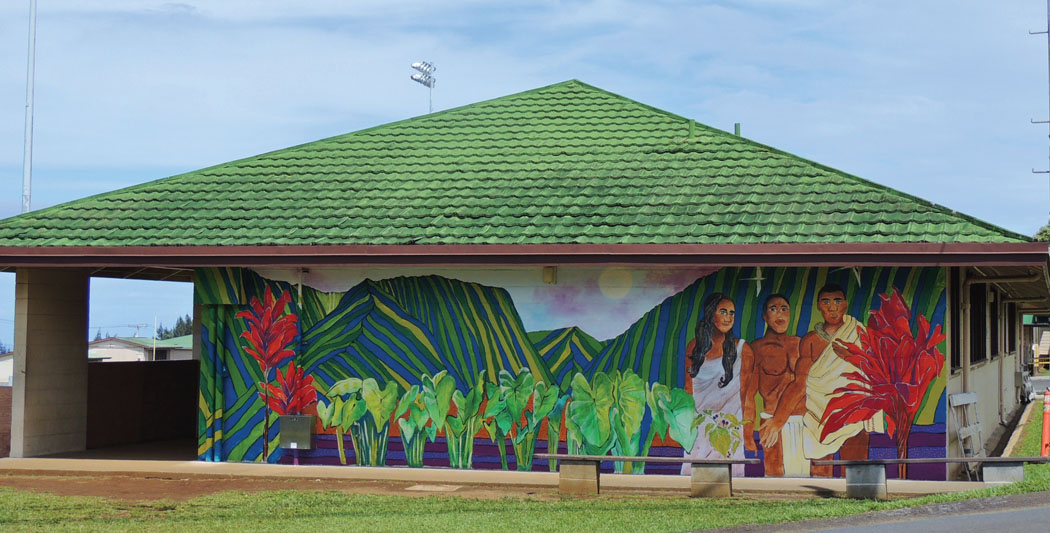
Indeed, HHIS has persevered. After the attack on Pearl Harbor, Army troops occupied the school gym and some classroom buildings from March 1942 to June 1943. During World War II, many students attended class only four days a week.
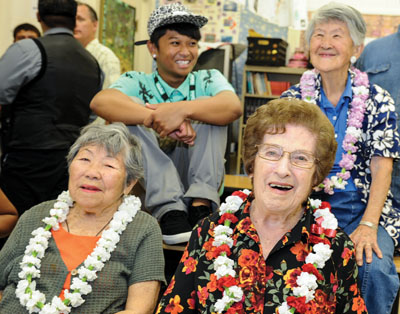
On Fridays and Saturdays, they participated in the “Victory Corps,” working on the sugarcane plantations, filling in for adults serving in the military. Others volunteered to make sweaters and slippers for the troops, or took Red Cross nursing training. The school’s victory garden produced 31,191 pounds of vegetables. Alumni remember carrying gas masks around the school, having to make do with a paperback yearbook instead of hardbound, and moving graduation ceremonies to the afternoon because of blackout regulations.
Despite the war, in 1944 enrollment exceeded 1,000 for the first time. The school continued to grow in the 1950s and 60s, including a new kindergarten, elementary school buildings, cafetorium, (combination cafeteria and auditorium) and intermediate school classrooms. The original gym was torn down and replaced by the library/administration building.
In the 1970s, buildings were added for music, science, homemaking, and agriculture arts; the 80s brought an auto shop, locker rooms, and more portable classrooms.

Also in the 70s, Music Director Gary Washburn arrived at HHIS. He re-built the music program in unconventional style, as the Honoka‘a Jazz Band, letting students bring in music they loved. He wrote arrangements, helped them learn to play like professionals, and found opportunities for them to tour with stars like Marcia Ball and Johnny Nicholas. In 2011, the school received a Grammy Foundation Award and a $5,000 grant. This year, the Jazz Band’s 17th CD, Playin’ in Traffic, was a finalist for the Nā Hōkū Hanohano Jazz Album of the Year, a first for a high school band.
Class of ’77 alumnus Dominic (Dom) Yagong was a self-proclaimed jock, as well as president of the student body, which may have ignited his interest in public service, leading to a 12-year run as county councilman. He’s proud to be counted among HHIS’s success stories—along with Governor John Waihe‘e, Lieutenant Governor Nelson Doi, State Senators Yoshito and Dwight Takamine, and Councilmembers Takashi Domingo and Valerie Poindexter. Possibly, Dom is more proud to be known as the “Voice of the Dragons” sports announcer for two decades.
In 1989, Dom chaired the committee for the school’s centennial celebration. “We had a two-hour parade,” says Dom, remembering how representatives from graduating classes marched or rode down the street. “We had all but two, from 1938–89, and 3–4,000 people came to the event. Now we’ve added 30 more classes!”
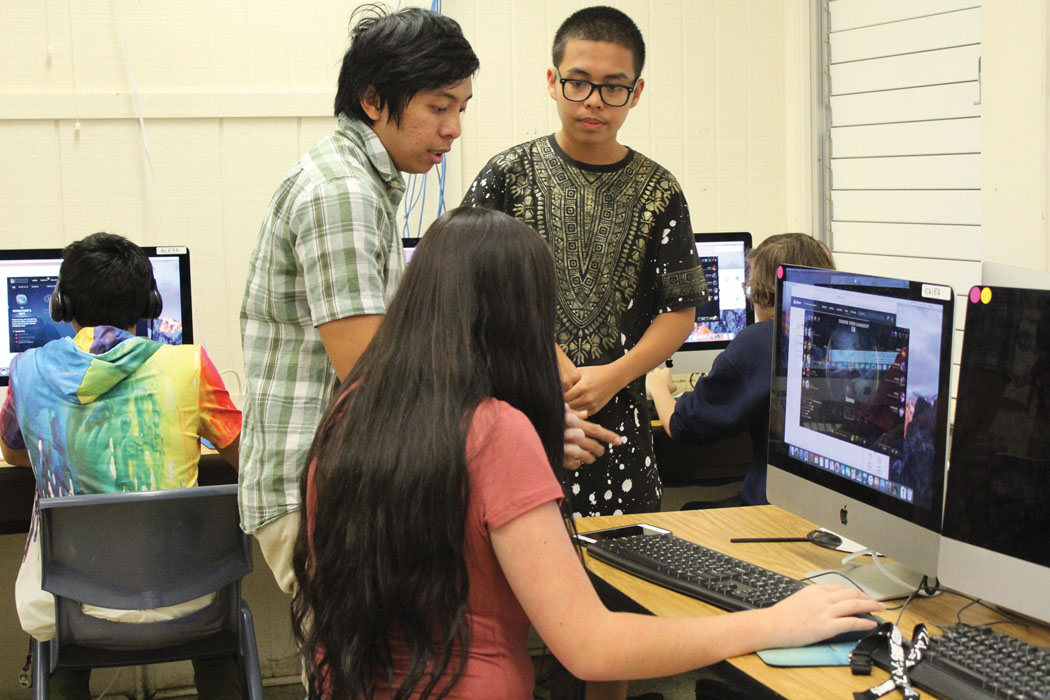
photo courtesy HHIS
When asked how he got involved in the 130th celebration, Dom says with a laugh, “Quite frankly, every five years, people say ‘C’mon, Dom, you gotta do it again!’ So I thought, if I wait till the 150th, I’m gonna be 80 years old! It’s time. I was ready.”
A generous community spirit helps fund large-scale important events like these. “We are very fortunate to have some good support from local businesses,” says Dom. “Malama Market became a Green & Gold sponsor with a generous donation, and KTA Superstores as well.”
“We are also doing our own fundraising,” he continues. “One of our graduates designed the official t-shirt, and we’re also doing a lū‘au with hula Saturday, July 20 at the school cafeteria, 4–6pm. Jayson Kanekoa, class of ’84, will be the chef. [Jayson is executive chef at the Waikoloa Beach Marriott Resort and Spa]. The whole event is open to the public—and there will only be 100 tickets left for sale at the door.”
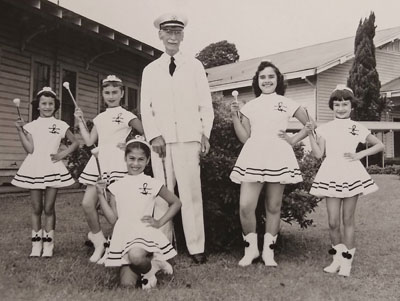
Other highlights include two free shows by comedian Augie T at 6 and 7:30pm Friday, July 19 during the Dragon Block Party. 130th Co-Chair Maelan Abran with Nā Hōkū award winner R.J. Kaneao, Nā Hōkū nominee Mark Saito, Ryan Hiraoka, Preston Lee & Kennie Lee Bender, and Donnie B are among the stellar alumni who will entertain. With the exception of the lū‘au, events are free. He encourages people to share their stories.
“One gentleman who’s coming [class of ’51] has Parkinson’s. The family’s going to bring him. He wanted to come because he was known as a smooth dancer, and he wanted to come to a place with those fond memories…That kind of stuff makes it worthwhile.”
Principal Rachelle Matsumura, class of ’88, also speaks proudly of HHIS. “We are very much focused on three things,” she says. “Safety and security, learning—putting the kids first, and doing everything with aloha.” She says the school excels in many ways, with award-winning music program and sports teams, outstanding career and technical education (agriculture/farming and auto shop). They are working to bring business and medical/health services back into the curriculum next year, and are actively recruiting a culinary teacher. Athletics remain an important part of the school, and a new type of competition, eSports, is developing in computer labs.
They also have an excellent Personal Transition Plan (PTP) program. “Every student has a teacher working with them for three years on the program,” says Rachelle. “We have the best counselors, who work really hard with our students—whether they want to go on to college, or go into the workforce after graduation…It’s an awesome school, awesome community.” ❖
For more information: 808.895.1711 or honokaahigh.eventleap.com/honokaahigh130years
With thanks to Dr. Momi Naughton, North Hawai‘i Education and Research Center

